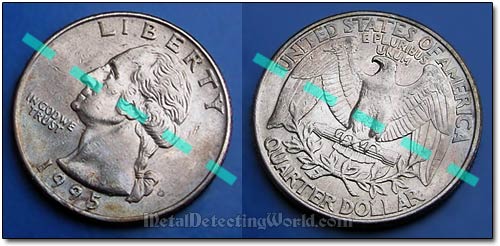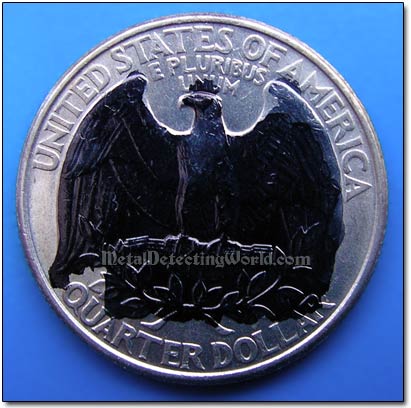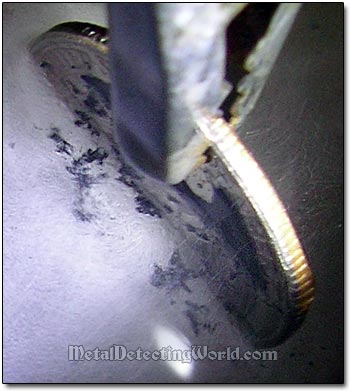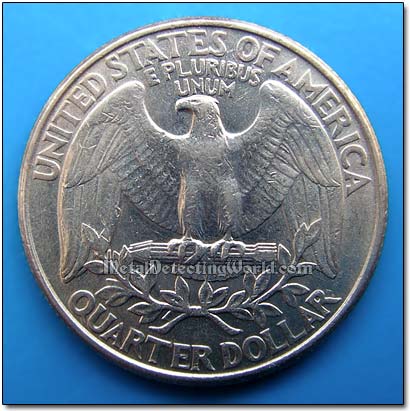How To Clean Coins with Electrolysis - A Detailed Illustrated Tutorial, page 24
Effects of Coin Electrolysis on Non-Dug Clad Coins with Well-Preserved Surface
I selected a non-dug 1995 clad quarter (US 25 cents) for my tests because the coin had a well-preserved surface without any corrosion.
• Test #1: Cleaning Only Half of Coin with Electrolysis
My first experiment was to see how electrolysis would clean a thin layer of tarnish off the coin's surface. I ran this test using the "Classic" setup with the AC adapter as a power supply for five minutes. Only a half of the coin was submerged into the electrolyte. The results are visible: the 5-minute electrolysis removed tarnish coating off the clad quarter's treated surface, and no pitting is present as shown on a picture below.
Results of 5-Minute Electrolytic Cleaning of Clad Coin

• Test #2: Removing Paint Off with Electrolysis
In this experiment, I wanted to see if the electrolytic cleaning under excessive voltage/amperage settings would damage the coin while removing a hard coating. To simulate a corrosion coating, I used a black permanent marker to paint some of the coin's reverse as shown on a picture below.
A Modern Clad Quarter is Partially Painted for Testing with Forceful Electrolysis

To test the coin under extreme condition - applying high voltage/amperage, I subjected it to the electrolytic cleaning with the "Pipe" setup using the car battery charger as a power source; its voltage/amperage being set at 24 V/5 A. The electrolytic reduction cleaning process started vigorously, and the black paint began coming off right away.
Paint Is Coming Off During Electrolysis

It did not take long to remove all the paint: the reverse surface was clean in five minutes.
Electrolysis Cleaned Paint Off Coin's Surface
